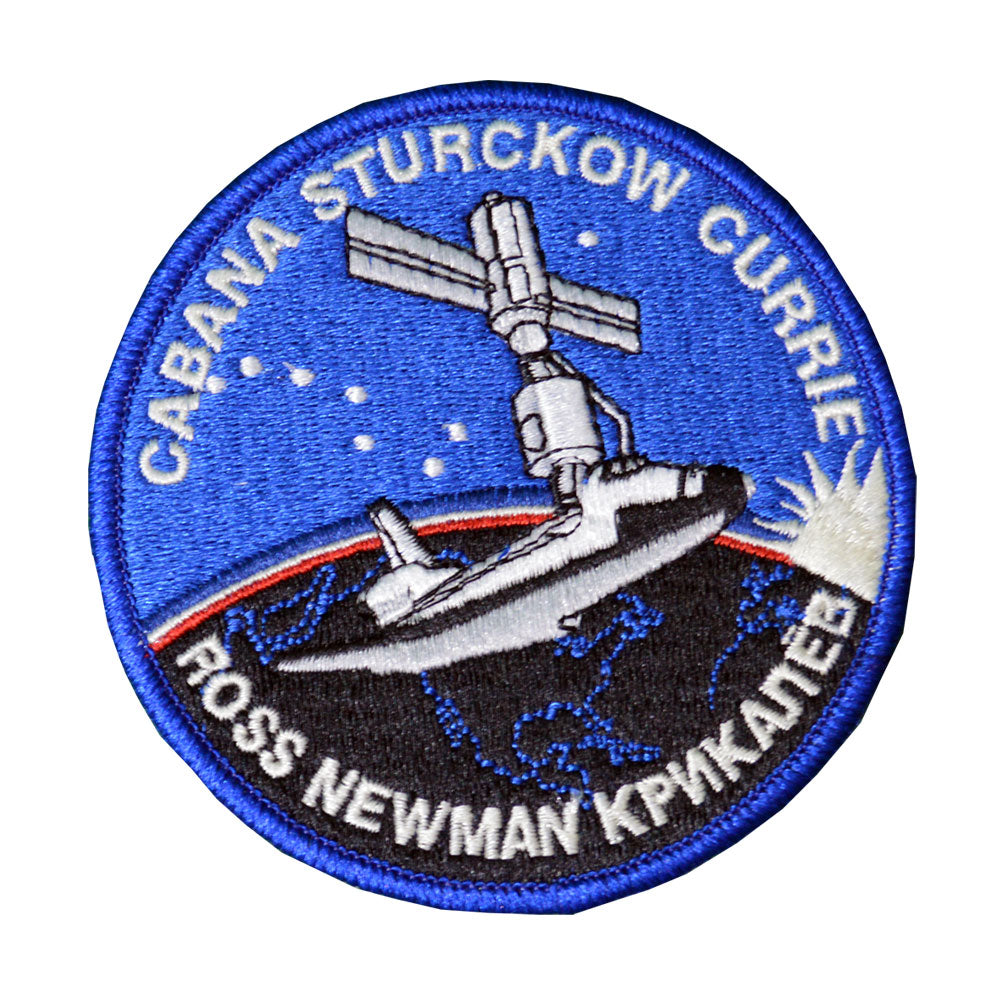
STS-88 Patch
Mission Highlights
During the 12-day mission to begin assembly of the International Space Station (ISS), all objectives were met. On Dec. 5, the 12.8-ton Unity connecting module was first connected to Endeavour’s docking system; on Dec. 6, using the 50-foot-long robot arm, the Zarya control module was captured from orbit and mated to Unity; and astronauts Ross and Newman conducted three space walks to attach cables, connectors and hand rails. The two modules were powered up after the astronauts’ entry.
Other EVA objectives were met as Ross and Newman tested a Simplified Aid for EVA Rescue (SAFER) unit, a self-rescue device should a space walker become separated from the spacecraft during an EVA; nudged two undeployed antennas on Zarya into position; removed launch restraint pins on Unity’s four hatchways for mating future additions of station modules and truss structures; installed a sunshade over Unity’s two data relay boxes to protect them against harsh sunlight; stowed a tool bag on Unity and disconnected umbilicals used for the mating procedure with Zarya; installed a handrail on Zarya; and made a detailed photographic survey of the station.
Astronauts completed assembly of an early S-band communications system that allows flight controllers in Houston to send commands to Unity’s systems and keep tabs on the health of the station, plus conducted a successful test of the videoconferencing capability of the early communications system which the first permanent crew will use. Krikalev and Currie also replaced a faulty unit in Zarya.
A new spacewalk record was established as Ross completed his seventh walk, totaling 44 hours, nine minutes. Newman moved into third place with four walks totaling 28 hours, 27 minutes.
Significant dates and times of the mission: Unity and Zarya were successfully engaged at 9:48 p.m., Dec. 6, and Unity came to life at 10:49 p.m., Dec. 7. At 2:54 p.m., Dec. 10, Cabana and Russian cosmonaut Sergei Krikalev floated into the new station together, followed by the rest of the crew; at 4:12 p.m., Cabana and Krikalev opened the hatch to Zarya and entered; at 5:41 p.m., Dec. 11, Cabana and Krikalev closed the hatch to Zarya, and at 7:26 p.m., they closed the door to Unity. ISS flew free at 3:25 p.m., Dec. 13, as Pilot Rick Sturckow separated Endeavour from the station.
Secondary objectives that were met were the successful deployment of the shuttle’s KU-band antenna and the Hitchhiker payload, including the MightySat and SAC-A satellites.
Problem areas/unexpected events: When the Unity-Zarya fittings would not align properly, it was necessary for the robot arm to ungrapple Zarya. In addition, several construction items (slidewire carrier, worksite interface socket, retractable tether, trunnion pin cover) floated away from the orbiter; some floodlights failed during EVA; an incompatible connection was found between the activated carbon ion exchange and the hose assembly, but repaired; a camera on the Orbiter Space Vision System experienced binding during fast-rate operation, but could be used for slow-rate; and uncertainties surfaced about the unexpected depletion of the SAFER propellant, gaseous nitrogen.


